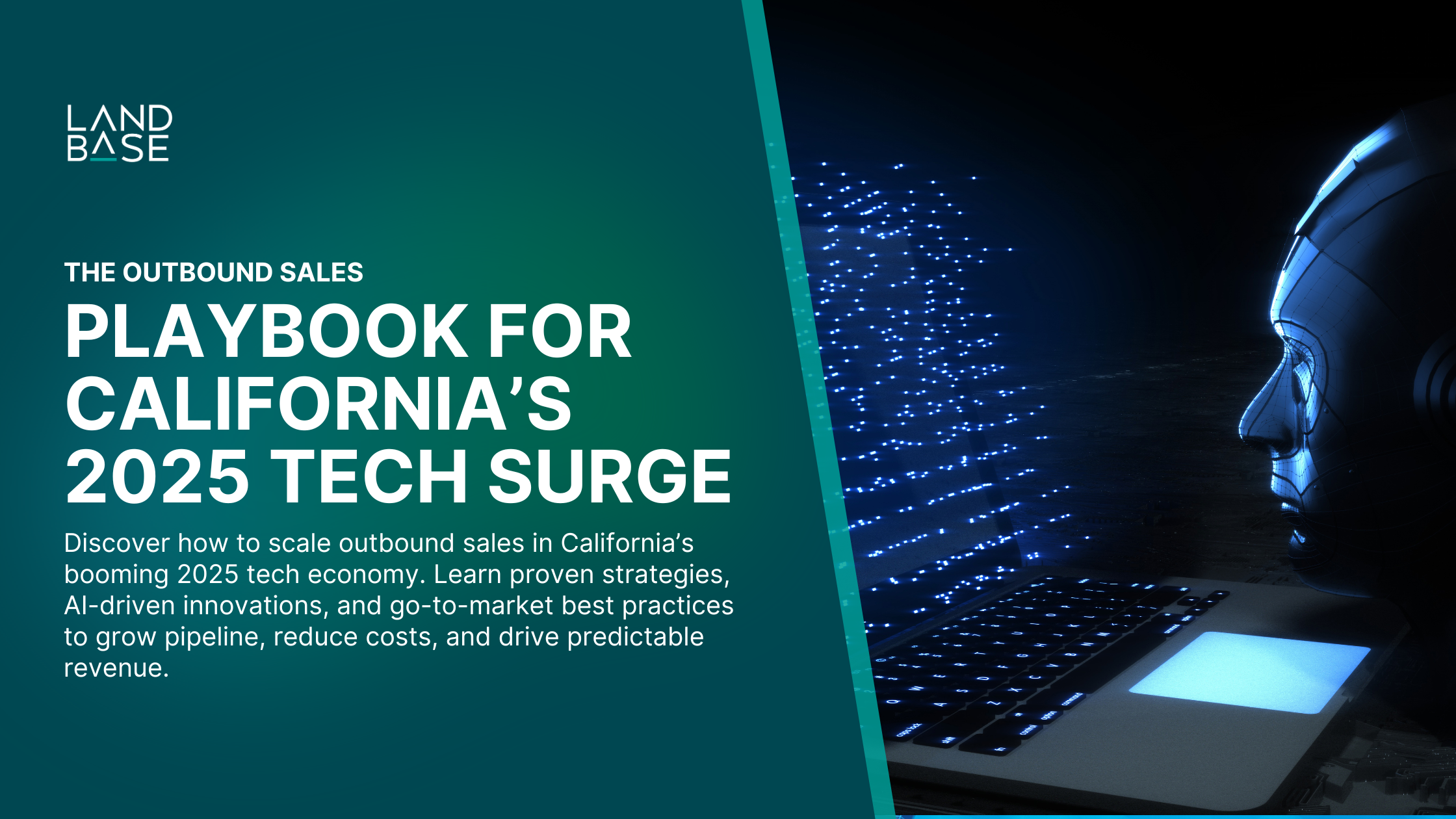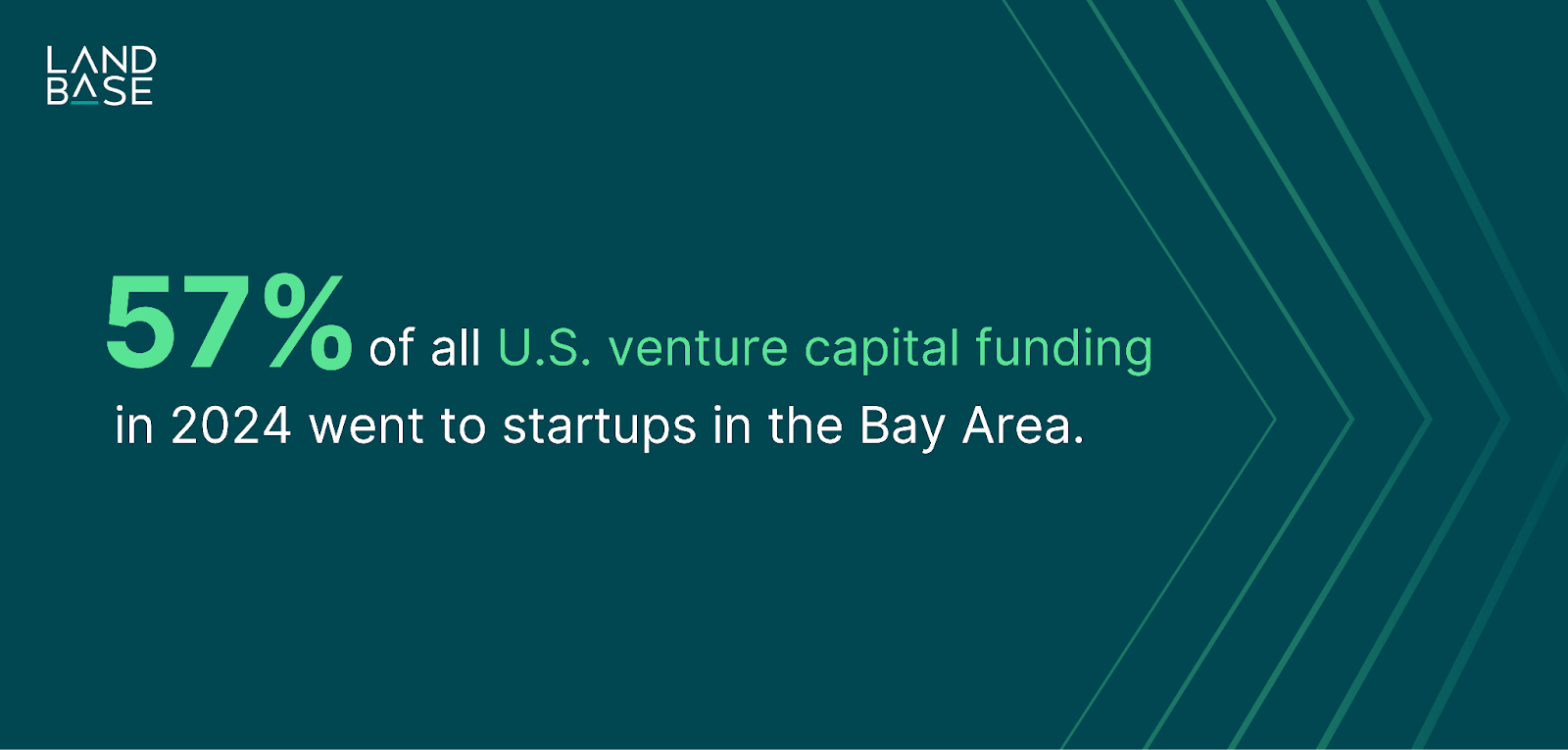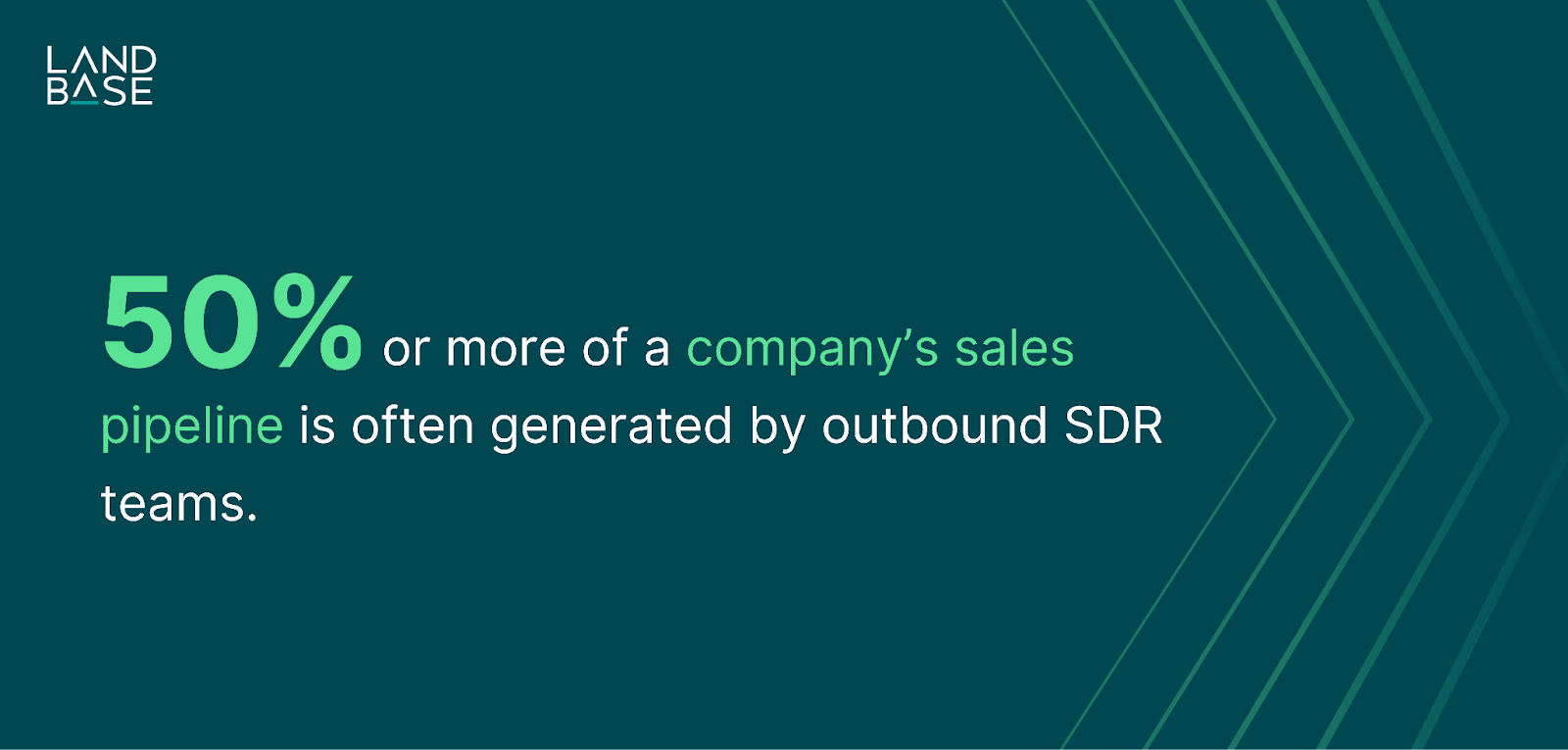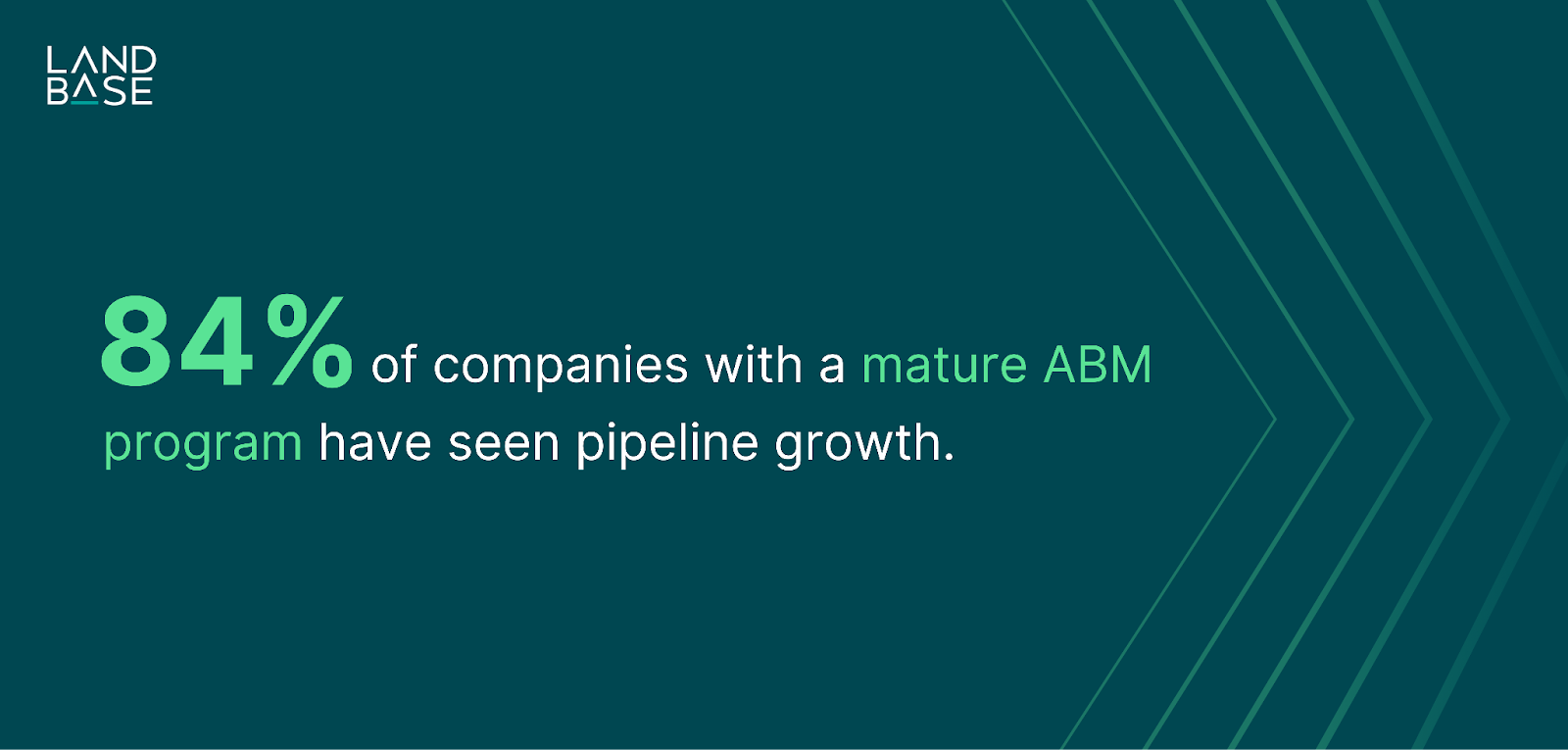
Daniel Saks
Chief Executive Officer

Outbound sales in California are entering a new era of opportunity. The year 2025 finds the Golden State’s tech sector surging ahead once again, fueled by a post-pandemic tech boom centered on innovations like generative AI. For sales and marketing leaders, this resurgence presents a chance to dramatically expand pipeline and revenue – if you adapt to the latest go-to-market (GTM) strategies. In this comprehensive guide, we’ll explore why California remains the epicenter of GTM innovation, what the 2025 tech economy means for pipeline generation, and how to rethink your outbound strategy in the age of AI and automation. You’ll also learn best practices for targeting high-growth accounts and discover how agentic AI (autonomous AI agents) is transforming GTM execution. By the end, you’ll have a clear roadmap to capitalize on 2025’s tech boom, with actionable insights optimized for outbound sales success in California’s fast-moving B2B landscape.

Silicon Valley’s obituary has been written many times, yet the data tells a different story: the West Coast – California in particular – continues to dominate the startup and innovation ecosystem in 2025. For all the chatter about tech talent dispersing or other regions rising, California remains ground zero for go-to-market breakthroughs. In 2024, startups in the Bay Area vacuumed up $90 billion in venture capital – 57% of all U.S. VC funding that year(1). This staggering concentration of capital (up from $59B the prior year) underscores that Silicon Valley is so dominant in the innovation economy that it devoured more than half of the nation’s startup investments. The result is a self-perpetuating engine of growth: where funding flows, talent and technology follow.
It’s not just money keeping California in the lead – it’s people. The Bay Area still offers the highest density of skilled tech professionals in the world. Roughly 49% of all “Big Tech” engineers and 27% of startup engineers in the U.S. are based in the Bay Area(1). These knowledge hubs give West Coast companies a formidable advantage in brainstorming new go-to-market (GTM) strategies and adopting cutting-edge tools. When nearly half of the nation’s top engineers mingle in the same region, it creates fertile ground for sharing ideas on everything from revenue operations processes to sales automation hacks. The proximity of major B2B innovators – from enterprise SaaS giants to scrappy AI startups – means GTM experimentation is part of the West Coast DNA.
Crucially, California’s ecosystem has a proven track record of spawning GTM innovation. This is the birthplace of cloud CRM (Salesforce, San Francisco) and marketing automation platforms, and today it’s a hotbed for AI-driven sales tech. Many of 2024’s biggest venture rounds went to Bay Area companies working on AI and GTM automation(2). The state is home to an outsized share of high-value startups, boasting roughly 800 unicorn companies as of early 2025 – more than triple the number in any other state(3). In short, California’s concentration of capital, talent, and entrepreneurial spirit make it the epicenter of go-to-market innovation. If you want to see the future of outbound sales, look to what West Coast startups and SaaS firms are doing first. The strategies being pioneered in San Francisco and Los Angeles today will shape how companies everywhere generate leads and revenue tomorrow.

After a turbulent start to the decade, the tech economy is rebounding in force – and nowhere is that more apparent than in California. Global startup funding, which dipped in 2022–2023, regained its footing in 2024 and ticked up to about $314 billion (a 3% increase year-over-year)(2). Much of this recovery is driven by AI-focused companies, with funding to AI startups nearly doubling from $55.6B in 2023 to over $100B in 2024(2). For outbound sales teams, this influx of capital means more potential clients – newly funded tech companies, flush with investment, that need B2B solutions and partnerships. The pipeline opportunities are vast: Bay Area startups alone raised $90B last year(1), and those companies will be looking to spend on tools, services, and platforms to accelerate growth. In other words, the 2025 tech boom is creating a target-rich environment for outbound prospecting, if you know where to aim.
However, a booming tech sector doesn’t automatically translate into an easy ride for sales teams. On the contrary, more growth can breed more competition for buyers’ attention. Generating a quality pipeline remains a critical challenge. In 2024, 45% of B2B companies reported that generating enough leads was their biggest challenge(4). This figure speaks volumes: nearly half of companies, even amid economic recovery, struggled to fill their funnel. The takeaway is that demand far outstrips supply when it comes to capturing decision-makers’ attention. Buyers have more choices, and their inboxes are just as crowded as ever. A rising tide lifts all boats, but if your outbound strategy isn’t sharp, you risk missing the wave of new business flowing through California’s tech scene.
To capitalize on the moment, organizations need to double down on pipeline generation strategies – especially outbound sales development. Despite the proliferation of inbound marketing and product-led growth models, outbound prospecting continues to be a primary engine of B2B pipeline. In fact, industry benchmarks show that sales development reps (SDRs) often generate roughly 50% or more of a company’s sales pipeline on average(5). High-performing outbound SDR teams can be responsible for over half of all pipeline, especially in higher annual contract value (ACV) B2B businesses. This underscores a key point: even in 2025’s tech boom, you cannot rely solely on inbound. Outbound sales – the act of proactively reaching out to target accounts – is mission-critical for hitting revenue goals. The companies that thrive will be those who invest in scaling outbound pipeline alongside the rising market.
So what does the 2025 tech economy demand from your outbound strategy? In short: greater volume, smarter targeting, and tighter alignment with revenue goals. The stakes (and rewards) are higher now. With so many new startups emerging in California, it’s imperative to identify the right prospects early – for example, catching a freshly funded company before your competitors do. It also means ensuring your SDR and sales teams are working efficiently to engage as many qualified leads as possible. That could involve retooling territories, adjusting KPIs, or adding headcount to capitalize on growth sectors (like AI, fintech, or clean tech) that are booming on the West Coast. The bottom line: pipeline generation needs to scale up. By honing your outbound approach to match the pace of California’s tech expansion, you can ride the boom to record pipeline and revenue performance. In the next sections, we’ll examine how to do exactly that – including harnessing AI and new tactics to supercharge your efforts.

The outbound sales playbook is being rewritten in real time by the forces of AI and automation. As a modern sales leader, you must adapt your strategy to a world where artificial intelligence isn’t a future ideal – it’s here now, transforming how we identify prospects, engage leads, and optimize campaigns. Over the past two years, AI adoption in business has exploded. By late 2024, 78% of companies reported using AI in at least one business function (up from 55% just a year earlier)(6). Marketing and sales are among the top functions seeing this uptake. In sales specifically, AI usage has essentially doubled: adoption of AI tools in sales teams surged from 24% in 2023 to 43% in 2024(8). These numbers reflect a clear reality – your competitors are embracing AI to work smarter, and you cannot afford to ignore it. From AI-powered email drafting and research bots to automated dialing and follow-up sequences, every aspect of outbound sales is becoming more efficient through technology. The question is, have you updated your strategy to leverage these tools effectively?
Rethinking your outbound approach starts with a simple premise: let humans do what they do best (build relationships and close deals), and let automation handle the repetitive drudgery at scale. Consider that sales representatives today spend only about 28% of their time actually selling, with the rest eaten up by administrative tasks and prospecting research(14). AI and automation present an enormous opportunity to flip that ratio in favor of selling. For example, instead of SDRs manually scouring LinkedIn for leads or crafting individual emails, intelligent algorithms can now handle lead sourcing, data enrichment, and even first-touch outreach. Tools driven by large language models (LLMs) can draft personalized email sequences or LinkedIn messages in seconds, following best practices learned from millions of data points. Scheduling automation can manage your cadence of touches across multiple channels without a rep lifting a finger. By automating these low-value tasks, your team frees up hours each day to spend on high-value activities – like engaging in real conversations with qualified prospects or strategizing account plans.
However, technology is not a silver bullet on its own. It demands a strategic rethink of processes and roles. For instance, how will your team integrate AI-driven insights into daily routines? Leading organizations are responding by restructuring roles and upskilling their people. It’s increasingly common to see a “RevOps” function (Revenue Operations) take charge of selecting and managing sales tech, ensuring that AI outputs are actionable for reps. Training is key as well: your team should be fluent in using AI tools – whether it’s interpreting an AI-generated ideal customer profile or fine-tuning the parameters of an automated campaign. The companies that succeed with outbound AI don’t set it and forget it; they continuously monitor results and give feedback to the algorithms (e.g. telling the AI which generated messages worked best) to improve outcomes over time. In essence, you want a human+AI collaboration where each does what it’s best at. The AI might surface a list of 50 high-potential accounts using predictive scoring, but your sales director still needs to decide which of those align with your strategic ICP (Ideal Customer Profile) and allocate them to the right rep.
Importantly, early adopters of AI in outbound are already seeing measurable gains. Nearly half (49%) of technology leaders in a recent survey said AI is now fully integrated into their company’s core business strategy(7), indicating that AI is no longer experimental – it’s central to growth plans. And these leaders are optimistic about returns: 60% of business owners predict AI will drive sales growth in the coming years. As you rethink your strategy, consider setting specific goals for AI/automation initiatives – for example, aiming to increase SDR productivity by a certain percentage or to reduce the sales cycle length via better lead nurturing. Track metrics before and after implementing an automation platform or AI assistant. You may find, like many have, that automating routine outbound tasks results in significantly more touches and higher conversion rates at the top of the funnel. In 2025’s California tech boom, an outbound team augmented by AI is akin to a team on “steroids” – able to reach more prospects with greater personalization than a traditional team ever could. To stay competitive, embrace AI and automation as core parts of your outbound sales strategy, not just nice-to-have add-ons. In the next section, we’ll dive into concrete best practices, including leveraging these technologies, to target the highest-growth accounts effectively.

In a thriving tech market like California’s, one of the biggest challenges is deciding where to focus your outbound efforts. High-growth accounts – such as newly funded startups or expanding tech firms – can yield huge wins if you engage them effectively. Here are some best practices to help your team zero in on the right accounts and craft outreach that cuts through the noise:
In summary, targeting high-growth accounts in an environment as dynamic as California’s tech sector requires a blend of focus and personalization. Chase the right leads (those with strong signals of growth), tailor your approach with an account-based mentality, and back your team with data and automation. Do this, and you’ll consistently land those marquee West Coast customers that become the foundation of pipeline and revenue growth.

By now it’s clear that AI is altering the outbound sales landscape – but the most profound change for GTM teams is coming from a specific class of AI systems known as agentic AI. These are essentially autonomous AI agents that can plan, execute, and optimize complex go-to-market tasks with minimal human intervention. In the context of sales and marketing, agentic AI means software that doesn’t just analyze or recommend, but actually takes action on your behalf. Imagine an AI that can function like a 24/7 SDR – researching prospects, sending personalized emails, following up, and booking meetings – all while continuously learning from the results. That’s the promise of agentic AI in GTM, and it’s already arriving via pioneering platforms developed in California.
To understand the impact of agentic AI, let’s consider what it does differently from traditional automation. Basic sales automation might send emails on a schedule you define, or score leads based on set criteria. Agentic AI goes further: it can autonomously orchestrate entire campaigns across channels and adapt them in real time. According to Landbase – a San Francisco-based startup leading this space – agentic AI involves “advanced AI agents that independently plan, execute, and optimize sales and marketing tasks,” proactively managing multi-channel outreach and learning from live data signals as they go(14). In practice, this means an AI agent could identify an ideal account, craft a tailored multi-touch outreach sequence (email, LinkedIn, perhaps even SMS), execute those touches, and adjust messaging on the fly based on response patterns – all without needing a human to micromanage the steps. This level of autonomy is a game-changer for outbound execution. It’s not simply automation on rails; it’s AI with a driver’s license.
One concrete example of agentic AI in action is Landbase’s GTM-1 Omni model – billed as the first AI action model purpose-built for go-to-market teams. Trained on a vast dataset of real sales interactions (over 40 million B2B sales emails, calls, and campaigns across 24 million companies and 220 million contacts(12)), GTM-1 Omni’s agents have learned what works and what doesn’t in outbound outreach. The model analyzes countless combinations of messaging, timing, and channels, enabling it to predict the optimal approach for any given prospect. When deployed, it acts like an extension of your team: handling outbound prospecting, lead nurturing, and even inbound response follow-ups in an omniscient manner. Early results are striking. In one case, a Landbase agentic AI campaign targeted 300 dormant partner accounts and achieved email open rates between 40% and 90% – whereas traditional manual campaigns often see a mere 1–2% open rate(13). That particular campaign generated 83 phone meetings in a month from a segment that had previously been unresponsive(13). Such outcomes are lightyears beyond the norm. It illustrates how an AI-driven execution engine, by sending perfectly timed, highly relevant messages at scale, can unlock engagement that human teams alone would rarely attain.
Agentic AI doesn’t just boost the top-of-funnel; it also tackles long-standing inefficiencies in GTM operations. Landbase’s platform, for example, evaluates factors like a company’s online presence and past campaign data to determine which campaigns are likely to fail – and advises against pursuing those. (Their analysis found that 45% of outbound campaigns fail to generate a single lead due to issues like poor targeting or messaging(13).) By catching these pitfalls early, the AI effectively “prevents companies from starting campaigns that are doomed to fail,” in the words of Landbase’s CEO(13). Additionally, agentic AI systems continuously optimize content. They use predictive models to score each email or ad variation before sending, forecasting how likely it is to get a positive response(14). If the score is low, the AI can tweak the copy or channel and test again – all in seconds – until it finds a winner. This iterative learning loop means your campaigns improve over time without requiring manual A/B tests orchestrated by a human. The AI is essentially running thousands of micro-experiments in the background, then scaling up the tactics that prove most effective.
For sales leaders, the rise of agentic AI in California’s tech toolkit presents a massive opportunity to scale results without scaling headcount. Businesses using Landbase’s agentic AI report that these always-on AI agents fill their pipeline, boost prospect engagement, and execute campaigns end-to-end – enabling revenue growth without adding extra reps(14). In practice, adopting an agentic AI platform could mean your existing team of 5 SDRs can do the work (in terms of outreach volume and touches) that might have required 15+ reps in the past – and do it with greater personalization and intelligence. It’s like having a fully staffed night shift that keeps your GTM engine running 24/7. One might worry that this diminishes the human touch, but in reality it augments it. The AI handles the heavy lifting of initial outreach and follow-ups at scale, surfacing only the most qualified, sales-ready opportunities to your human reps. Those reps, in turn, can focus their energy on high-value conversations and closing deals, rather than grinding through cold call lists. The result is a more leveraged organization: higher pipeline generation and conversion rates at a lower cost per opportunity. In a competitive market like California, that efficiency can be a decisive edge.
It’s worth noting that the agentic AI trend is not happening in isolation – it’s part of a broader movement in tech. Even large enterprise players are integrating autonomous AI agents into their products. Salesforce, for example, announced an “AI Agent” capability in 2024 that can autonomously handle tasks like data cleanup or even orchestrate simple campaigns inside its CRM(6). The fact that both startups and established firms are racing toward agentic solutions signals that this model of GTM execution will likely become standard in the next few years. Early adopters in California are already reaping the benefits, proving out use cases and building AI-driven playbooks.
As we look ahead, imagine the possibilities: autonomous GTM systems that manage the entire buyer’s journey, from first touch to nurturing to renewal, only flagging human intervention when strategic judgment or creativity is truly needed. That future is not far off. For now, forward-thinking teams should start by experimenting with agentic AI on a portion of their outbound efforts – perhaps by running an AI-driven campaign for a specific segment or product line, and comparing the results to traditional methods. Given the initial successes (like the 80% open rates and rapid pipeline creation noted above), you might quickly find you want to expand your AI’s role. In the end, agentic AI is about empowering your go-to-market organization to achieve more with less friction. And in the hyper-competitive arena of California’s tech boom, that could make all the difference in outpacing your rivals.
California’s 2025 tech boom represents a once-in-a-decade opportunity for outbound sales teams – if you’re prepared to seize it. The West Coast continues to set the pace in innovation, from the way new startups are leveraging AI to how mature enterprises are reorganizing around data-driven sales motions. We’ve covered how and why California remains the epicenter of GTM innovation, and examined the implications of a rebounding tech economy on your pipeline goals. The takeaway is clear: to thrive in this environment, you must combine time-tested outbound fundamentals (targeted focus on high-growth accounts, personalized multi-channel outreach, tight sales-marketing alignment) with next-generation tactics (harnessing AI and automation, embracing agentic AI platforms) to scale your efforts.
The good news is that you don’t have to do it alone. This is where Landbase’s agentic AI go-to-market platform – GTM-1 Omni – can become your secret weapon. GTM-1 Omni is the world’s first GTM-native AI action model, an autonomous system trained on tens of millions of successful sales interactions to act as a digital extension of your team. It deploys a “swarm” of always-on AI agents capable of handling everything from prospect research and data enrichment to orchestrating outreach across email, LinkedIn, and more. Essentially, it gives you an army of 24/7 SDRs and marketing ops assistants, all powered by one cohesive intelligence. Businesses using GTM-1 Omni have seen remarkable outcomes – from 4–7x higher conversion rates on outbound campaigns to significant reductions in customer acquisition cost – all while freeing up their human reps to focus on building relationships and closing deals. It’s a true force multiplier for any B2B organization looking to scale in California’s fast-moving market.
Ready to transform your outbound sales strategy and ride the 2025 tech boom to new heights? Landbase’s GTM-1 Omni platform can empower your revenue team to achieve predictable, scalable growth without adding headcount. Imagine automating your most repetitive prospecting tasks, engaging every lead with hyper-personalized messaging, and never missing a follow-up – all with an AI co-pilot that learns and improves continuously. That’s the power of agentic AI working for your business. Whether you’re a SaaS startup founder aiming to land your first Fortune 500 clients, or a sales VP at a growing tech company seeking to dominate your market, Landbase provides the proven technology and expertise to make it happen. Don’t let this tech boom pass you by while your competitors innovate faster. Contact Landbase today to schedule a personalized demo of GTM-1 Omni. See for yourself how our agentic AI platform can fill your pipeline with qualified opportunities, supercharge your team’s productivity, and establish your company as a revenue leader in the new California gold rush. The future of outbound sales is here – let Landbase help you capitalize on it.
Tool and strategies modern teams need to help their companies grow.